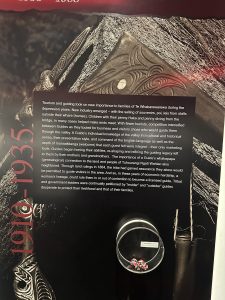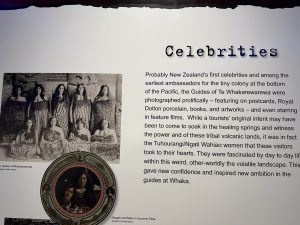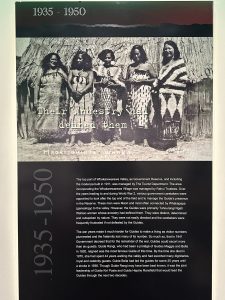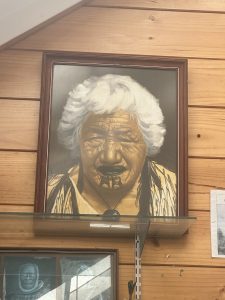
In the contemporary landscape of heightened global threats and ever-evolving technologies, the tension between national security and civil liberties has become one of the most pressing issues facing democratic societies. The United States, a nation founded on principles of freedom and individual rights, finds itself at a crossroads where it must balance the imperative of safeguarding its citizens from external dangers with the equally crucial mandate to uphold their civil liberties. Historically, periods of crisis have often precipitated erosions in civil rights — from the internment of Japanese Americans during World War II to the expansive surveillance measures adopted post-9/11. Yet, these actions raise fundamental questions about what it means to live in a free society and whether security can ever truly be achieved at the expense of liberty. This essay will argue that the U.S. government has an inherent responsibility to prioritize the protection of its citizens’ civil liberties over national security measures. By examining historical precedents, legal frameworks, and ethical considerations, we will explore how safeguarding civil liberties not only aligns with constitutional mandates but also fortifies long-term national security by fostering trust and cooperation between citizens and their government. In doing so, this discourse aims to underscore that true security is not merely about defending against immediate threats but also about preserving the foundational values that define American democracy.
Central to this argument is the assertion that prioritizing civil liberties does not inherently diminish national security but rather strengthens it by cultivating a society founded on mutual trust and respect between the government and its citizens. The concept of “striking a new balance between liberty and security,” as articulated by Waldron (2003), emphasizes that an overemphasis on security measures often leads to the erosion of freedoms that are vital for democratic engagement and public trust. Historical instances, such as the post-9/11 era, where expansive surveillance programs were justified under the guise of national security, illustrate how such policies can infringe on personal freedoms while engendering widespread suspicion and disillusionment towards governmental institutions. Additionally, constitutional mandates enshrined in documents like the Bill of Rights highlight the importance of protecting individual freedoms against potential overreach by state powers. Legal scholars argue that maintaining robust civil liberties is essential for fostering active civic participation and dissent, which are crucial elements of a resilient democracy. Therefore, upholding civil liberties should be viewed not as a hindrance to national security but as an integral component of it—one that ensures long-term stability through the maintenance of public confidence and cooperation with governmental efforts to address genuine threats (J Waldron – Journal of Political Philosophy, 2003). By realigning our approach to prioritize these liberties, we uphold the very principles upon which the nation was founded while ensuring that our methods for safeguarding against threats remain ethical and justifiable within a democratic framework.
Building on this foundation, it is crucial to recognize that the appropriate balance between civil liberties and national security is achieved only when civil liberties are given precedence. This argument finds substantial support in legal scholarship, which posits that national security ultimately must be a priority, and a condition precedent toward securing civil liberties (RN Davis – Brook. J. Int’l L., 2003). By placing the protection of civil liberties at the forefront, the government not only adheres to constitutional imperatives but also fosters an environment where citizens feel valued and protected. Such prioritization ensures that any measures taken in the name of national security are transparent, accountable, and subject to public scrutiny—key elements that prevent governmental overreach and safeguard democratic processes. Furthermore, historical precedents underscore how unbridled national security measures can lead to significant abuses of power; for example, during the McCarthy era’s anti-communist purges or the implementation of Japanese-American internment camps during World War II, both instances wherein perceived threats justified egregious violations of personal freedoms. These periods serve as cautionary tales illustrating how sidelining civil liberties undercuts trust in government institutions and erodes the very democratic foundations they aim to protect. Consequently, ensuring robust protections for civil liberties inherently contributes to a more secure nation by fostering civic engagement and resilience against actual threats through ethically sound practices grounded in mutual respect between state authorities and the citizenry they serve (RN Davis – Brook. J. Int’l L., 2003).
Furthermore, empirical research corroborates the assertion that prioritizing civil liberties over stringent national security measures results in better outcomes for democratic societies. Kelly (2015) posits that an equilibrium between liberty and security is not only attainable but necessary for the sustenance of democratic values. The study underscores that policies which excessively prioritize security often result in a chilling effect on free speech, political activism, and other forms of civic engagement. Such conditions create an atmosphere where citizens may feel disenfranchised or reluctant to exercise their constitutional rights due to fear of surveillance or governmental retribution. By contrast, a legal framework that emphasizes the protection of civil liberties cultivates a more engaged and informed citizenry capable of contributing positively to national discourse and resilience (Kelly, 2015). This protective stance fosters transparency and accountability within government institutions, reducing instances of power abuse while enhancing public trust—a crucial element in addressing threats effectively without compromising ethical standards. Hence, integrating these considerations into policy-making ensures not only compliance with constitutional mandates but also reinforces the social fabric by upholding the principles of justice and mutual respect essential for long-term stability (Kelly, 2015).
Continuing from this perspective, it is essential to acknowledge that the integration of civil liberties as a core priority also aligns with fundamental ethical principles and human rights frameworks that form the bedrock of democratic societies. Hill (2020) argues that while balancing security and liberty is critical, an overemphasis on security at the expense of individual freedoms often leads to public disillusionment and decreased civic participation. Such a scenario was evident in the post-9/11 surveillance programs where broad measures intended for national security inadvertently encroached on personal privacy and freedom, leading to widespread mistrust in government actions (Hill, 2020). By prioritizing civil liberties, the U.S. government ensures compliance with both domestic constitutional imperatives and international human rights standards, thereby maintaining its moral authority on the global stage. Moreover, policies that safeguard civil liberties can mitigate risks associated with governmental overreach by instituting checks and balances essential for transparency and accountability. These mechanisms not only prevent potential abuses but also facilitate a cooperative relationship between citizens and state authorities—a relationship vital for effective governance amid contemporary security challenges. Ultimately, when civil liberties are upheld as paramount within national security strategies, they fortify democratic institutions by embedding ethical considerations into policy-making processes—ensuring that actions taken in defense of the nation do not undermine the foundational values it seeks to protect (Hill, 2020).
Thus, while some scholars argue that during periods of heightened threat, governments should and do naturally adjust the balance toward enhancing security at the expense of civil liberties (EA Posner & A Vermeule, 2007), it is critical to recognize the potential dangers inherent in such a shift. Historical lessons and empirical evidence suggest that an overemphasis on security can lead to systemic abuses and long-term erosion of democratic values. For instance, the curtailment of civil liberties often leads to governmental overreach, as seen in various controversial actions justified under the guise of national security. These include surveillance programs initiated post-9/11 which significantly intruded upon personal privacy without adequate oversight or transparency (Hill, 2020). By contrast, maintaining civil liberties as a priority does not equate to negligence in matters of security but rather ensures that protective measures are implemented within a framework that respects individual rights and freedoms. This approach fosters public trust and civic participation—key elements in creating a resilient society capable of confronting actual threats effectively. Consequently, embedding robust protections for civil liberties into national policy serves dual purposes: safeguarding fundamental rights while also upholding the ethical standards essential for sustained democratic governance. Therefore, despite arguments favoring increased security measures during crises, it is imperative for the U.S. government to uphold civil liberties as foundational principles that underpin its legitimate authority and ensure long-term societal stability (EA Posner & A Vermeule, 2007).
Building upon this foundation, it becomes evident that the U.S. government’s responsibility to prioritize civil liberties over national security measures is not merely a constitutional imperative but also an essential element of ethical governance and public trust. R Wyden, C Guthrie, J Dickas, and A Perkins (2006) emphasize that while striking a balance between security and privacy is crucial, the scale must tilt towards protecting civil liberties to prevent governmental overreach and preserve democratic integrity. Historical precedents such as the internment of Japanese Americans during World War II or the more recent NSA surveillance programs underscore the risks associated with sacrificing individual freedoms for perceived security gains. These actions led to widespread public mistrust and long-lasting societal scars that eroded confidence in government institutions (R Wyden et al., 2006). By contrast, a commitment to safeguarding civil liberties enhances transparency and accountability, fostering a cooperative relationship between citizens and state authorities—critical for effective governance amidst modern security challenges. Thus, integrating robust protections for civil rights within national policy frameworks serves dual purposes: ensuring adherence to ethical standards while reinforcing the foundational values of democracy. Consequently, prioritizing civil liberties over national security measures not only upholds constitutional mandates but also fortifies democratic institutions by embedding ethical considerations into policy-making processes—thereby ensuring that protective measures do not undermine the very freedoms they aim to defend (R Wyden et al., 2006).
Furthermore, the intrinsic value of civil liberties as foundational to a just and equitable society cannot be overstated. Security needs may well matter, playing a major role in determining just where the proper balance lies, but it is this proper constitutional balance of both civil liberties and national security that ensures enduring democratic governance (FJ Williams et al., 2006). In examining the critical importance of prioritizing civil liberties, it becomes evident that such an approach not only aligns with ethical mandates but also empowers citizens by fostering an environment of trust and engagement. When individuals feel their rights are respected and protected, they are more likely to participate actively in civic processes, thereby strengthening democratic institutions. Conversely, policies skewed excessively towards national security at the cost of personal freedoms can lead to an erosion of public trust and the onset of authoritarian tendencies. This delicate balancing act is crucial: upholding robust protections for civil liberties ultimately safeguards against potential governmental overreach and abuse. By embedding these protections into national policy frameworks, the U.S. government can assure its citizens that security measures will not infringe upon their fundamental rights—thus maintaining societal stability and preserving democratic integrity for future generations (FJ Williams et al., 2006).
In this context, it is essential to consider the empirical data suggesting that security measures influence the balance between security and liberty, reinforcing the necessity of prioritizing civil liberties. According to Bousselet (n.d.), qualitative research underscores how intensified security protocols often disproportionately impact individual freedoms, leading to a heightened risk of civil liberties erosion. These findings demonstrate that while security efforts are indispensable, their implementation should not overshadow fundamental human rights. For instance, during the post-9/11 era, numerous policies designed under national security pretexts encroached significantly upon personal privacy and freedom without ample legislative oversight or judicial scrutiny. Such dynamics illustrate an urgent need for robust legal frameworks that balance these dual imperatives without compromising either. Furthermore, protecting civil liberties fosters public trust and active civic engagement—core components of a resilient democratic society capable of effectively addressing real threats (Bousselet). By embedding protections for civil liberties into national policy structures, the government can ensure its actions reflect constitutional values and ethical governance principles. Therefore, prioritizing civil liberties within the spectrum of national policy is not only a constitutional mandate but also pivotal in maintaining public confidence and fortifying democracy against potential authoritarian encroachments.
Given these considerations, it is evident that the U.S. government has a responsibility to prioritize the protection of its citizens’ civil liberties over national security measures to maintain constitutional integrity and ethical governance. As Waldron (2017) suggests, balancing security concerns with civil liberties necessitates “striking a new balance between liberty and security,” ensuring that fundamental rights are not undermined in the process. This imperative is further illuminated by historical examples where excessive emphasis on national security led to significant breaches of personal freedoms, such as during the internment of Japanese Americans in World War II and the NSA surveillance programs post-9/11. These instances highlight how prioritizing national security at the expense of civil liberties can erode public trust and harm democratic institutions. Hence, embedding robust legal protections for civil rights within national policies not only aligns with constitutional mandates but also fortifies democracy by fostering an environment where individual freedoms are upheld. Such an approach ensures that governmental actions remain transparent and accountable, thereby reinforcing public confidence and active civic engagement—essential components for addressing contemporary security challenges while preserving democratic values (Waldron, 2017).
Moreover, it is imperative to acknowledge that prioritizing civil liberties aligns with ethical governance principles, ensuring that security measures do not erode fundamental freedoms. As C Michaelsen (2006) argues in “Ethics of War in a Time of Terror,” the essence of democratic integrity rests upon upholding civil liberties even amidst heightened security concerns. Michaelsen notes that an overemphasis on national security can lead to a surveillance state where personal freedoms are severely curtailed, thereby undermining the very democratic institutions meant to protect society. For example, the extensive surveillance authorized by the Patriot Act post-9/11 resulted in widespread invasions of privacy and contributed to public skepticism about government intentions (Michaelsen, 2006). These actions underscore the importance of a robust legal framework that places civil liberties at its core while addressing security needs. Protecting citizens’ rights not only strengthens trust in governmental institutions but also galvanizes civic participation and accountability. By embedding these protections into policy, the U.S. can create a resilient democracy capable of effectively countering threats without sacrificing its foundational principles. Thus, maintaining an unwavering commitment to civil liberties ensures ethical governance and fosters a stable society where democratic values thrive (Michaelsen, 2006).
In conclusion, the intricate balance between national security and civil liberties remains a pivotal issue in safeguarding the core values of American democracy. This essay has underscored that prioritizing civil liberties does not merely coexist with national security but actively reinforces it by building trust and fostering cooperation between citizens and their government. Historical precedents such as the internment of Japanese Americans during World War II and the surveillance measures post-9/11 serve as stark reminders of how overreach can erode public trust and undermine democratic principles. By adhering to constitutional mandates that protect individual freedoms, the U.S. government ensures transparency, accountability, and public scrutiny—key components that prevent abuses of power and promote a resilient civic society. Legal scholars have consistently argued that robust civil liberties are essential for active civic participation and dissent, which fortify a democracy against threats both internal and external. Ultimately, this discourse highlights that true security is achieved not by compromising freedom but by upholding it; thus ensuring long-term national stability through ethical governance aligned with foundational democratic values. The ongoing challenge lies in realigning policy approaches to prioritize these liberties unequivocally, ensuring that America’s commitment to freedom remains unwavering even in times of heightened global threats.
References
Waldron, J. (2003). Security and liberty: The image of balance. Journal of Political Philosophy, 11(2), 191-210.
Davis, R. N. (2003). Striking the Balance: National Security vs. Civil Liberties. Brook. J. Int’l L., 29, 175.
Kelly, J. J. (2015). BALANCING NATIONAL SECURITY AND FREEDOM: REACTIONS TO TERRORISM AND ITS EFFECT ON CITIZENS’CIVIL LIBERTIES, CIVIL RIGHTS, AND PRIVACY (Doctoral dissertation, Johns Hopkins University).
Hill, K. J. (2020). Balancing National Security and the Constitution: The Security Blanket Over Civil Liberties (Doctoral dissertation, Johns Hopkins University).
Posner, E. A., & Vermeule, A. (2007). Terror in the balance: Security, liberty, and the courts. Oxford University Press.
Wyden, R., Guthrie, C., Dickas, J., & Perkins, A. (2006). Law and Policy Efforts to Balance Security, Privacy and Civil Liberties in Post-9/11 America. Stan. L. & Pol’y Rev., 17, 331.
Williams, F. J., Dulude, N. J., & Tracey, K. A. (2006). Still a Frightening Unknown: Achieving a Constitutional Balance Between Civil Liberties and National Security During the War on Terror. Roger Williams UL Rev., 12, 675.
Bousselet, C. The balance between security and liberty.
Waldron, J. (2017). Security and liberty: The image of balance. In Civil Rights and Security (pp. 3-22). Routledge.
Michaelsen, C. (2006). National Security versus Civil Liberties: Rights-Based Objections to the Idea of Balance. In Ethics of War in a time of terror. Australian National University.














































































































































